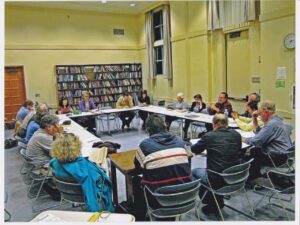Sure, there is much frustration with taxi drivers in South Africa – but one thing is clear: they provide a service to people who live in places that some cities’ public transport routes regretfully miss.
Driving along the peninsula’s Main Road (which extends from the CBD all the way down to Simon’s Town), you may hear “Wyyynberg, Wyyynberg” or “Moooooowbrraaay”.
Upon hearing these words, you might realise that if you get in the taxi with the man shouting that destination, you will eventually end up at said destination, but if you don’t use this form of transport, how the hell do you learn otherwise?
After all, unlike the MyCity busses and ‘Metrofail’ trains, there aren’t maps of routes and stops or even a set of prices concerning distance.
WhereIsMyTransport decided to change that and, after eight years of gathering data, released a sweet map of all 137 routes driven by taxis every day:
Here’s what Wired had to say about mapping informal transport routes across the world:
“The taxis are sort of a self organizing [sic] system that has sprung up around people’s unmet need to get from place to place,” [Madeline Zhu of the South African startup WhereIsMyTransport] says.
For that reason, the taxis always circumvented regulation and developed rules and logic based on market demand. They don’t charge set fares or follow fixed routes. Stops can change depending on who’s riding that day, and good luck knowing when to transfer.
That creates no end of headaches for anyone trying to use the system, let alone understand it, improve it, or incorporate it into a formal transit network.
The recent boom in mapping is happening because it can—thank your smartphone’s GPS—and because it must. “For a long time, cities thought they were going to replace these mini buses with formal buses, but there’s a growing recognition that that’s not going to happen,” says Jackie Klopp, a professor at Columbia’s Center for Sustainable Urban Development and co-founder of Digital Matatus, the project behind Nairobi’s matatu map.
Instead, experts say cities should integrate them with existing transportation options like rail and Bus Rapid Transit systems. That’s where mapping comes in. “The moment you realize that modern bus rapid transit is not the solution for everything, then the first thing you have to do to improve the informal bus system is to make it visible,” says Shomik Mehndiratta, a transportation analyst at the World Bank who worked on the peseros mapping project in Mexico City.
It’s really cool to have some perspective on a form of transport that actually works, even though no one really knows how.
I know that if I find myself in a pickle, for R7 I can get a taxi from town to Observatory – and it usually makes for an interesting ride where you are forced to interact with people you might not otherwise.
Ultimately, the various public transport routes in Cape Town are going to be an answer to our awful traffic congestion, so whether it’s familiarising yourself with the map above (which you can find in full HERE) or getting yourself a Vespa (we can totes get you a discount on), a fully integrated system where everything works together is better than fighting for one to reign.
[source:wired]








